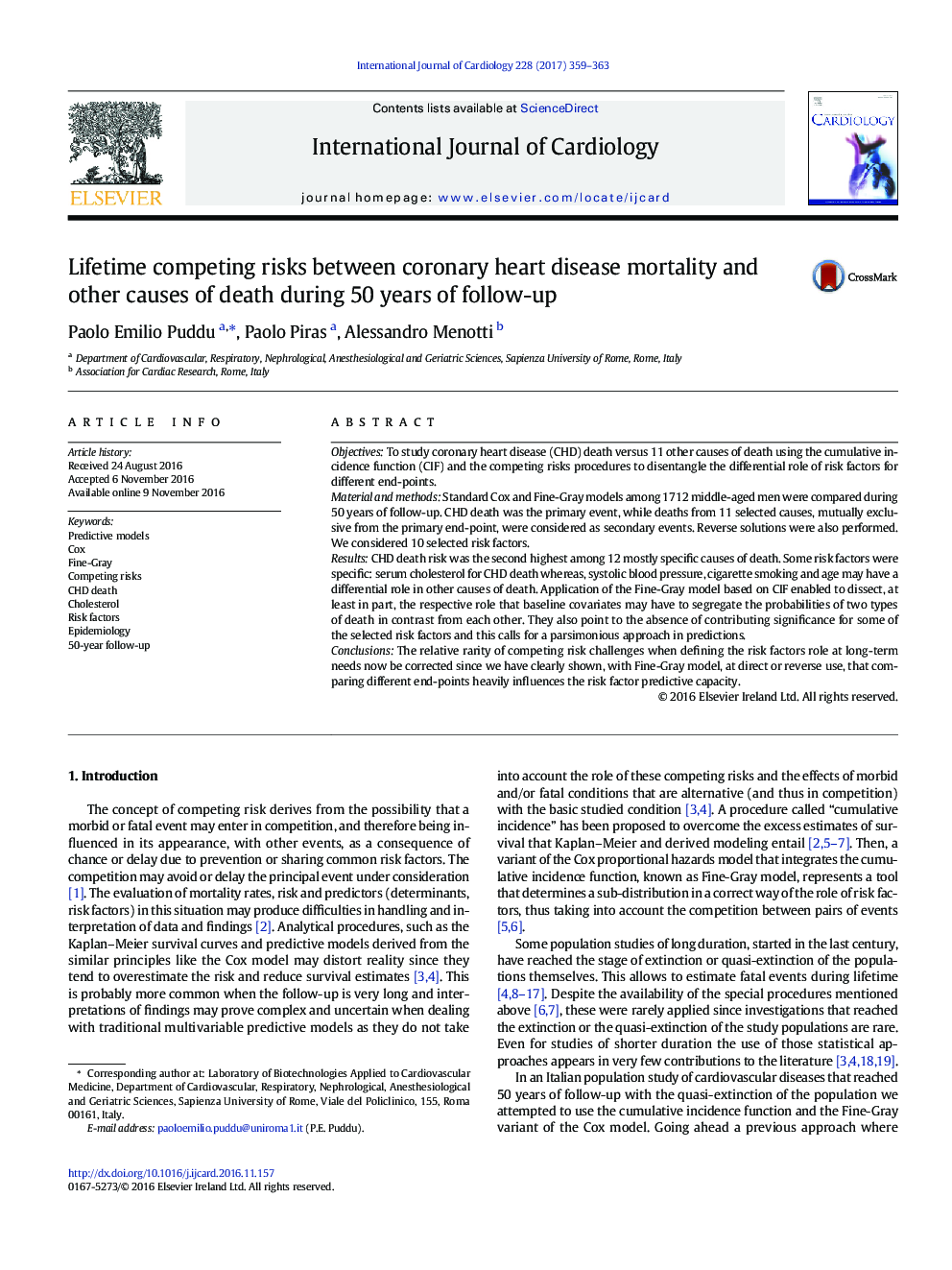| Article ID | Journal | Published Year | Pages | File Type |
|---|---|---|---|---|
| 5605597 | International Journal of Cardiology | 2017 | 5 Pages |
â¢Cox and Fine-Gray models among 1712 middle-aged men followed-up 50 years were compared.â¢CHD death and 11 other causes of death were considered and 10 selected risk factors.â¢Serum cholesterol was specific for CHD deaths.â¢Systolic blood pressure, cigarette smoking and age had a role in other causes of death.â¢Fine-Gray model, at direct or reverse use, comparing different end-points shows differential risk factor predictive capacities.
ObjectivesTo study coronary heart disease (CHD) death versus 11 other causes of death using the cumulative incidence function (CIF) and the competing risks procedures to disentangle the differential role of risk factors for different end-points.Material and methodsStandard Cox and Fine-Gray models among 1712 middle-aged men were compared during 50Â years of follow-up. CHD death was the primary event, while deaths from 11 selected causes, mutually exclusive from the primary end-point, were considered as secondary events. Reverse solutions were also performed. We considered 10 selected risk factors.ResultsCHD death risk was the second highest among 12 mostly specific causes of death. Some risk factors were specific: serum cholesterol for CHD death whereas, systolic blood pressure, cigarette smoking and age may have a differential role in other causes of death. Application of the Fine-Gray model based on CIF enabled to dissect, at least in part, the respective role that baseline covariates may have to segregate the probabilities of two types of death in contrast from each other. They also point to the absence of contributing significance for some of the selected risk factors and this calls for a parsimonious approach in predictions.ConclusionsThe relative rarity of competing risk challenges when defining the risk factors role at long-term needs now be corrected since we have clearly shown, with Fine-Gray model, at direct or reverse use, that comparing different end-points heavily influences the risk factor predictive capacity.
